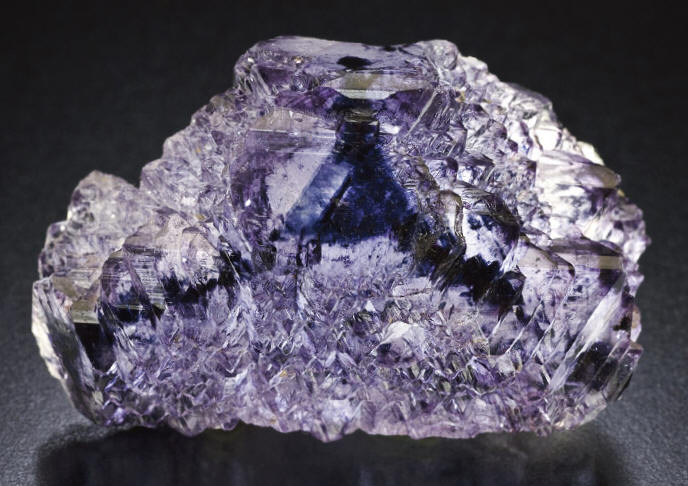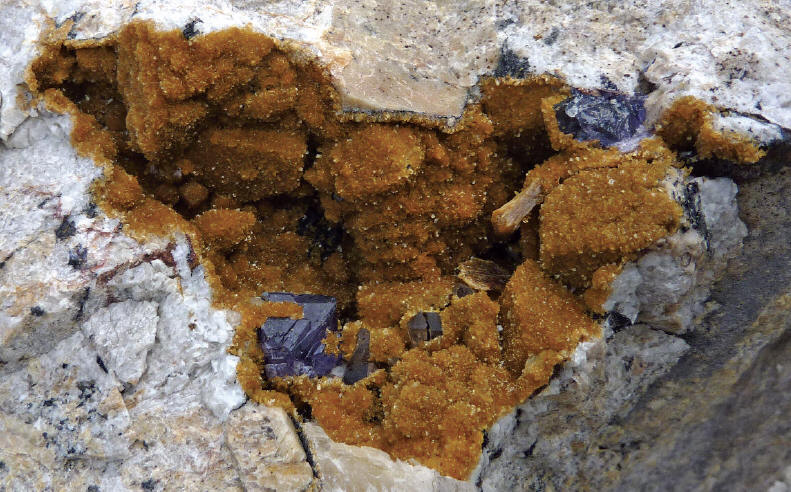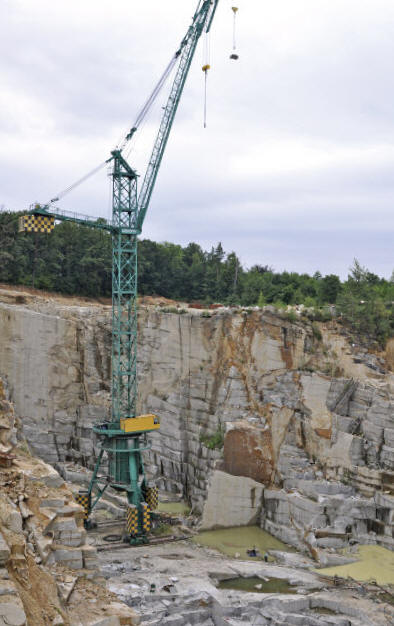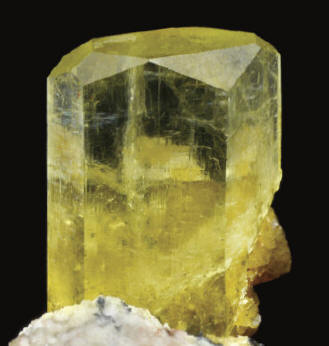
Fluorite with albite, microcline and stilbite, 6.5 cm wide. Fisher/Kureczka collection.
Strzegom (Lower Silesia, Poland) isa classic European locality famous forpegmatites, which host collector-qualitycrystals growing in miarolitic cavities.
Pegmatites occur here in Carboniferousage granite intrusions. Pockets occur frequently,but the vast majority of themlack quality specimens. There are over40 active quarries in the area, and withsuch a large amount of mining it is amazingthat good pockets are found onlyonce or twice a year. The pockets vary insize from a few centimeters to a few meters,and crystal size can vary correspondingly.
Smoky quartz crystals canreach 1 m in length, and high quality fluoritecrystals are known up to 20 cm!
In April 2009, one of the SpiriferGeological Society members who lives inStrzegom town noticed an interestingpegmatite body in one of the quarries(Wekom II, near Kostrza).
AndrzejKorzekwa is a mineral fanatic, and immediatelystarted exploring the pegmatite,finding several small cavities.

Fluorite crystal from Andrzej’s Pocket collected during original discovery in 2009,5.5 cm wide. Spirifer collection. J. Scovil photo.
He was able to collect 2 very good qualityfluorites (see first photo on page 10)in addition to many feldspars, epidotes,stilbites, and quartz specimens. Unfortunately,this part of the quarry wasabandoned soon after discovery of the pegmatite, ending the chance to collectmore crystals. Andrzej was very, very patientand waited for over a year untilmining operations resumed in the areaof the pegmatite. His patience was rewardedwith the discovery of a fantasticpocket.
POCKETS
As is common in the Strzegom area,pockets in pegmatite bodies are frequentlyconnected, or occur very close toone another. This is exactly the situationfor what we call “Andrzej’s Pocket”. Includingthe miarolitic cavity discoveredin 2009, Andrzej’s Pocket is actually a seriesof pockets within a 3 meter longzone occurring in a single pegmatitebody.
Quarry mining in the area of Andrzej’sPocket encountered the secondcavity during the first week of September2010. The pocket was almost completelydestroyed by miners during theprocess of extracting granite blocks.
Miners extract blocks in this quarry by aprocess of cutting the granite with hightemperature burners. The miners cutright through the pocket, and the majorityof the crystals were destroyed bythermal shock when fire entered thepocket. When Andrzej came to thequarry, not much left from that cavity.
The cavity was in one of the big blocksmined for tiles. The blocks are 2 x 2 x 4meters, and obviously impossible towork without proper equipment. Andrzejmade a deal with quarrymen working onthe hydraulic guillotine, which is used forbreaking granite into uniform blocks.

In situ open cavity with orange stilbite covering purple fluorites. Pocket is about 10 cm wide. K. Pietras photo.
The quarrymen moved the block, andsplit it open for Andrzej. Price for thatservice was… two cheap fruit wines.
Upon splitting the big block, Andrzejfound pieces of stilbite, feldspars, calcite,pink and violet fluorite, chlorite andsmoky quartz up to 10 cm. Overall size of the pocket was about 80 x 20 x 60 cm,which turned out to be the largest cavityin the find! During careful removal of theburned leftovers, Andrzej extracted twogood quality specimens including a 4 cmoctahedral violet fluorite in associationwith quartz, calcite and stilbite.

Wekom II Quarry with giant crane used for transport of granite blocks and machinery. T. Praszkier photo.

Probably the best known beryl crystal from Poland, 2 cm high. Andrzej’s Pocket. Spirifer collection. G. Bijak photo.

Fluorite with albite and microcline, 8.2 cm wide. Spirifer collection. J. Scovil photo.








 YueGongAnBei 44051102000467
YueGongAnBei 44051102000467


 |
|